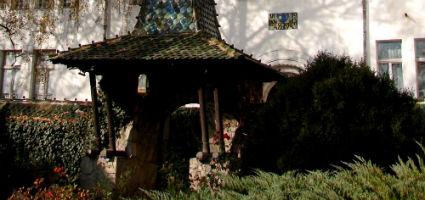2025. April 23. Wednesday
Szekler National Museum - Sfîntu Gheorghe
 |
Address: 520055, Sfîntu Gheorghe str. Kós Károly 10. / Kós Károly u. 10.
Phone number: (267) 312-442
E-mail: office.sznm@gmail.com
Opening hours: Temporarily closed.
|
The exhibition has closed for visitors.
2009.08.03. - 2009.08.23.
Museum tickets, service costs:
|
Individual ticket for adults
|
10 HUF
|
/ capita
|
|
Individual ticket for students
|
5 HUF
|
/ capita
|
|
Group ticket for students
(10-30 people)
|
50 HUF
|
/ group
|
|
Individual ticket for children
(over 7 years of ages)
|
5 HUF
|
/ capita
|
|
Individual ticket for pensioners
|
5 HUF
|
/ capita
|
|
Ticket for families
(2 adults + 1-5 children)
|
20 HUF
|
/ family
|
|
Guide
|
20 HUF
|
|
|
Video
|
20 HUF
|
The military collapse of the Austro-Hungarian Monarchy, chaos following the revolution ruled out an effectual way of usual military practices. Disorder and self-conscious lack of respect took over the role of discipline and respect.
It proved difficult to set up the 38. Division of Transylvania. One day, the Székely officers staying in Cluj came up with the idea of recruiting in Székely Land. They set off at the end of November. On 1 December 1918, the first shell train came out from the Ágostonfalva station transporting Székely recruits to Cluj. The core of the division was retreating militiamen, cadets, and commandoes. It was named Székely Division in January 1919.
The soldiers in the Székely Division served in deficient uniform and armour on the demarcation line passively waiting, not doing anything. This broke moral strength of the soldiers. On 16 April, three divisions started attacking Romanian offensives. Twelve-thousand people lined up from Máramarossziget to Csucsa. The loss of battle was inevitable.
The withdrawing division faced the reds a number of times. Battles fought against the Romanians near Győrtelek, Kocsord, and Mátészalka were lost. The division gathered in the Nyírség, but its situation was considered hopeless. Negotiations began. The treaty was signed on 26 April in Nyírbakta, the laying down of arms took place in December. Most of the upper-deck ratings were transported to the camps in Brassov, a few continued fighting for their home by the red side, later on joining the national army.
It proved difficult to set up the 38. Division of Transylvania. One day, the Székely officers staying in Cluj came up with the idea of recruiting in Székely Land. They set off at the end of November. On 1 December 1918, the first shell train came out from the Ágostonfalva station transporting Székely recruits to Cluj. The core of the division was retreating militiamen, cadets, and commandoes. It was named Székely Division in January 1919.
The soldiers in the Székely Division served in deficient uniform and armour on the demarcation line passively waiting, not doing anything. This broke moral strength of the soldiers. On 16 April, three divisions started attacking Romanian offensives. Twelve-thousand people lined up from Máramarossziget to Csucsa. The loss of battle was inevitable.
The withdrawing division faced the reds a number of times. Battles fought against the Romanians near Győrtelek, Kocsord, and Mátészalka were lost. The division gathered in the Nyírség, but its situation was considered hopeless. Negotiations began. The treaty was signed on 26 April in Nyírbakta, the laying down of arms took place in December. Most of the upper-deck ratings were transported to the camps in Brassov, a few continued fighting for their home by the red side, later on joining the national army.